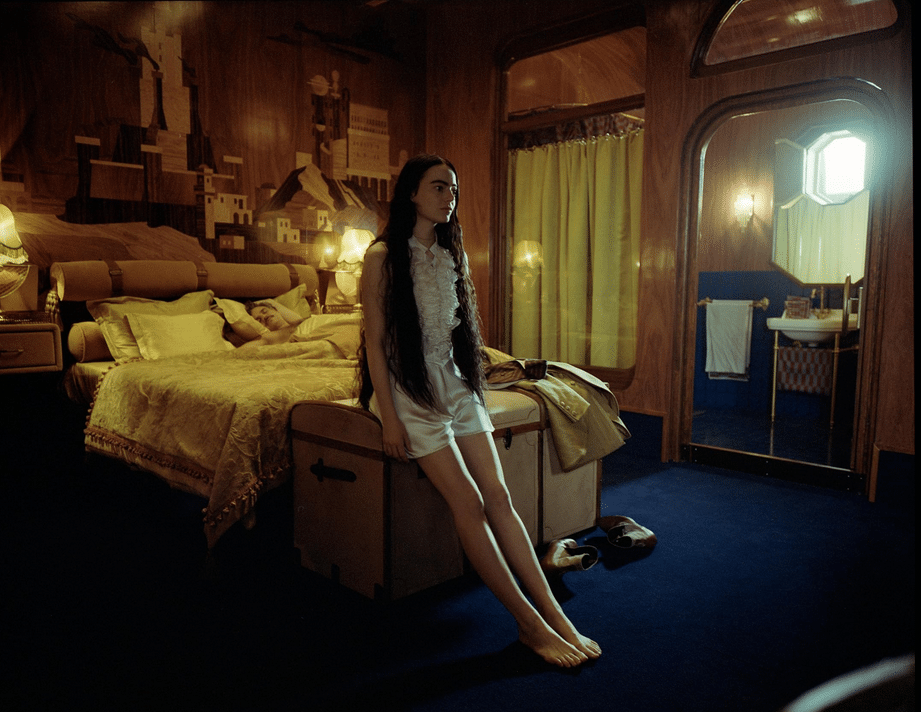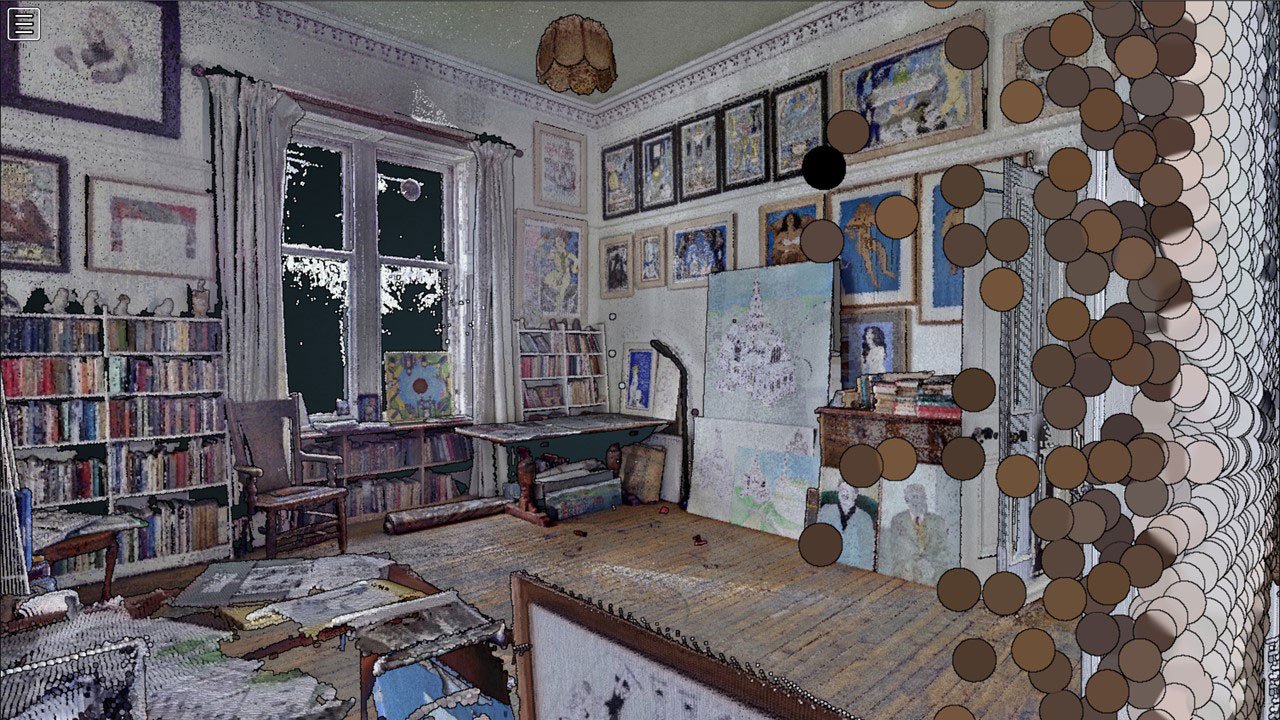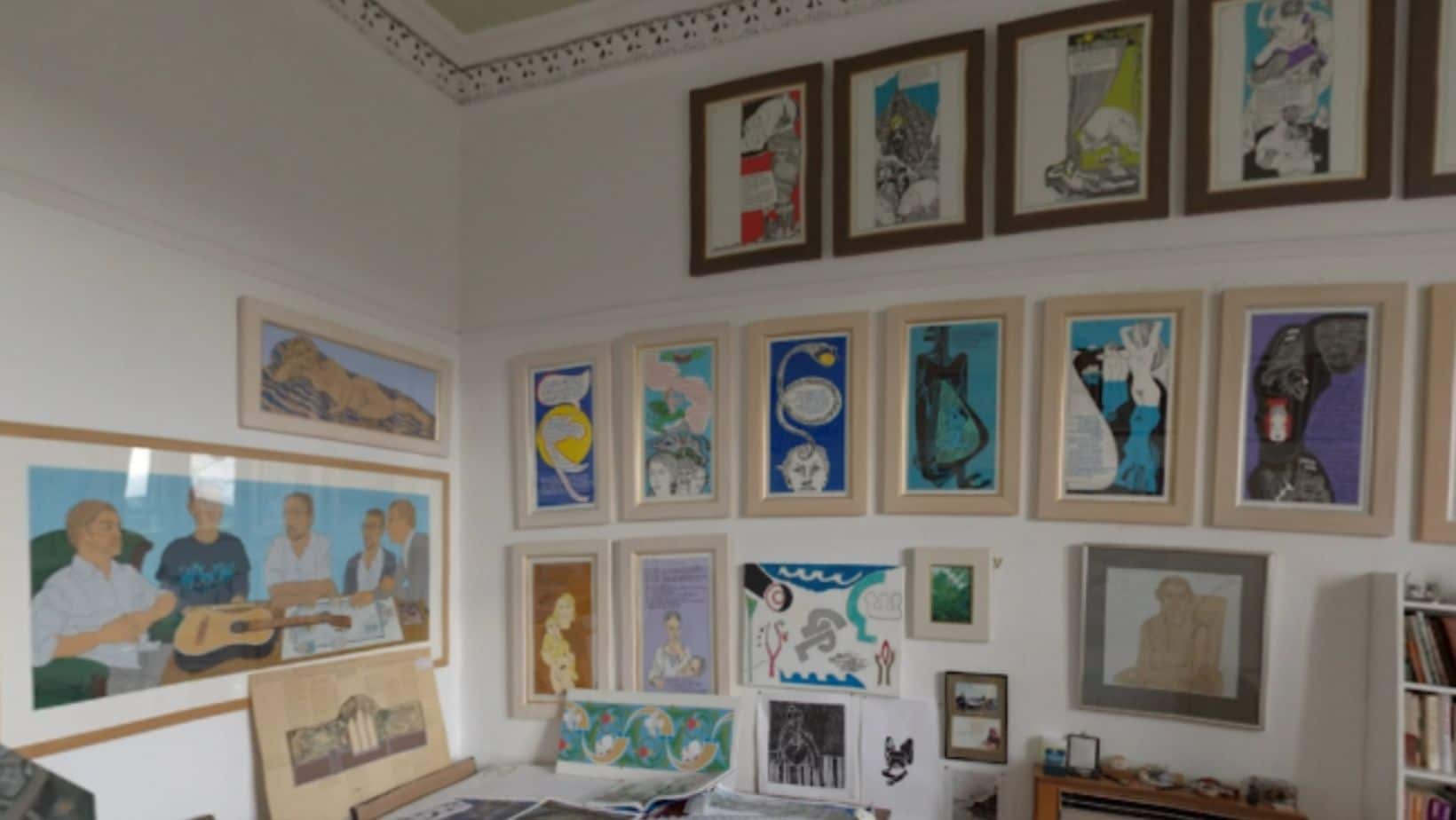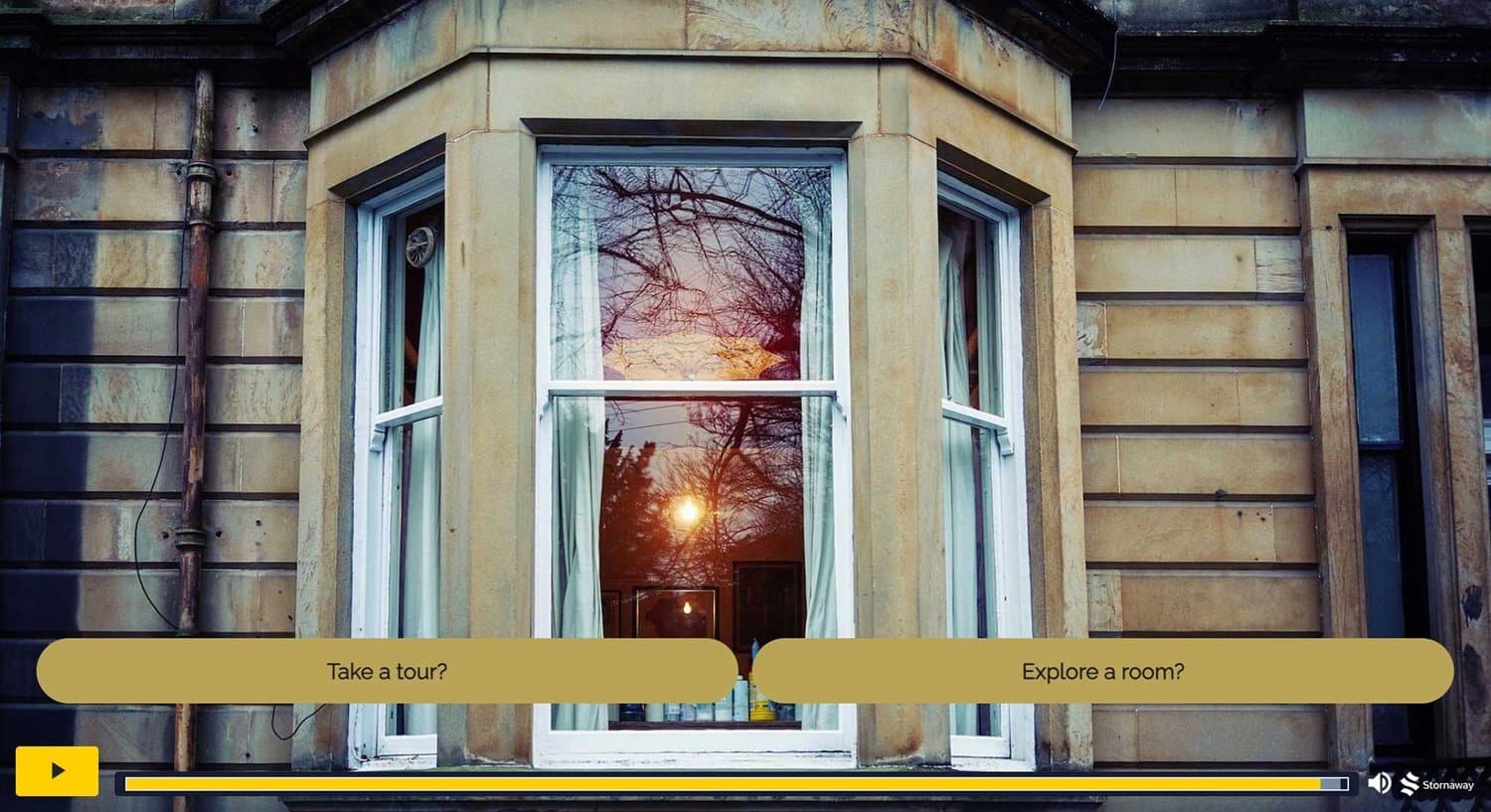by Brock Horning | January 2024
How do you capture a sense of space? An intangible atmosphere and a place that represents something different to each visitor? That’s the challenge that Kat Rolley and her creative collaborators, Anita Sullivan and Tracy Mutch, took on.
A Gray’s Place was a successful attempt to digitally preserve the home of well-known Scottish author Alasdair Gray, author of Lanark, 1982 Janine and Poor Things – the book behind the recent award-winning film. This was part of a wider creative community project inspired by Alasdair Gray called A Gray Space.
The Project
To digitally preserve and present the home and creative space of Scottish writer and artist Alasdair Gray. To truly recreate that unique sense of place and allow viewers to immerse themselves in it.
The Challenge
How do you bring viewers into a single location and make it engaging? How can it invite and respond to different perspectives? As a public-facing experience, it also needed to be accessible for all ages and digital abilities.
The Solution
“Stornaway took care of all the technical stuff to leave us focused on the creative challenges.” – Kat Rolley
Stornaway’s 360 video capabilities and easy-to-use interface proved to be the perfect match for the team’s requirements. Removing the technological complications, they could focus on bringing A Gray’s Place to life.
The Reaction
“I would 100% recommend Stornaway to anybody. And I’ve worked with quite a few different digital branching narrative tools.”– Kat Rolley
The Origin Story
Alasdair Gray was an inspirational writer and artist, He wrote several critically acclaimed novels including Poor Things, recently adapted for the big screen. A creative mind comparable to William Blake and George Orwell.

Screenshot from Global Globe award-winning and BAFTA and Academy Award-nominated 2023 movie Poor Things, based on a novel written by Alasdair Gray.
After Alasdair’s passing in 2019, his niece Kat Rolley wanted to preserve the special space that was Alasdair’s home. His flat represented a space of connection and inspiration where new ideas were discussed and new perspectives explored.
Before Alasdair’s flat was sold, Kat collaborated with the Glasgow School of Art to record Alasdair’s home in 3D. Receiving a set of sizable data files, the team sought to turn the data into an immersive experience with a limited budget and resources. And drew a blank.
Two years later, Stornaway came to the rescue with its uniquely accessible and intuitive offering. The results have been well received:
“When people have engaged, they’ve really got it, which has been really moving. People have understood it and they’ve felt the emotion behind it and they’ve valued it.” – Kat Rolley.
The Impact
A new and powerful way to preserve cultural heritage
By digitally preserving and presenting Alasdair’s flat within the context of his creative legacy and impact, Kat and the team want to re-look at the way we remember and record our cultural heritage. “I was looking to separate creative legacy from physical objects. Rethinking how we reflect on our creative heritage,” she says.
As an alternative to the traditional route of physical objects in a museum setting, Kat wanted to preserve Alasdair’s creative space and capture his impact on other people in a format that is widely accessible. In Kat’s eyes, this gives a unique insight into Alasdair Gray as a person and a creative. Capturing the feeling of an entire space and enabling anyone to visit, explore and contribute to the experience.

A feel for the project – Alasdair’s studio. Where he would also sleep, surrounded by his art and books.
A deeper connection between creator and viewer
To create that sense of connection and engagement, interactivity was very important for Kat and the team. “It allows for a reciprocal relationship where viewers bring themselves to the experience and have agency,” she says.
Rather than dictating to the audience, Kat wanted viewers, or visitors as she calls them, to come in and find their own way through the experience. Giving visitors agency brings them fully into the story and Kat has witnessed a stronger connection with the experience. This ethos of community participation covers the entire A Gray Space project.
A space for personal perspectives and experiences
Kat saw that linear video only allowed for one perspective – but this wasn’t the aim of A Gray Space. As she mentioned: “It’s only by trying to understand everybody’s experience of Alasdair that you can start to get a rounded sense of who he was.” In this way, the recreation of Alasdair’s flat, A Gray’s Place, was designed to give people the space to explore in a way that felt right to them. As she says: “You can stop, you can pause, you can go back, you can look again. And I know that people will look at things differently.”
Interactive video incorporates new perspectives to deliver a personal experience with every view.
The Stornaway difference
“It was brilliantly easy to use – almost addictively so”
Having many years experience as a learning consultant, Kat had first-hand knowledge of designing and creating branching narrative software. And with Stornaway, she found a quick pick-up-and-play software. “Within a couple of hours of starting, I had built something playable. So the software, absolutely 100% for us was the easy bit.”
“Instant playback is totally genius”
Kat quoted the ability to instantly play your interactive video back as her favourite Stornaway feature. No long waits for rendering. No coding or complicated processes are required before you playtest your video – just the click of a button. As Kat confirms: “being able to instantly see what you’ve done is brilliant and so helpful.”
“The end result is very intuitive and easy for people to use”
A Gray’s Place needed to be an easy-to-play experience for all ages and technological abilities. And Kat reports it passed with flying colours: “My mum had no issues or question marks about how to use the Stornaway interactive video we created. And she has questions about most digital things.”
Thanks very much to Kat for chatting us through their fantastic project A Gray Space.
So where do you want to go next?


